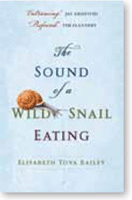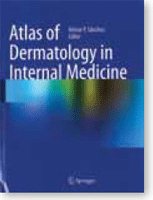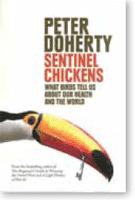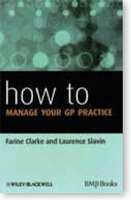The sound of a wild snail eating
Elisabeth Tova Bailey
Australia: The Text Publishing
Company, 2010
ISBN 978 1921 758 126, $22.95

The Sound of a Wild Snail Eating is an exquisite book on the healing power of nature by Elisabeth Tova Bailey.
This is a gem of a true story in the book. A fit, active woman in her prime suffers from a lifethreatening and debilitating disease which lasts over 2 decades. Her illness brings isolation and loss of all the things she loves but she finds solace and sanity in her love and keen observation of nature, specifically in the form of a snail. Yes, a snail. Something we consider so small and inconsequential, yet the deep connection with the natural world has a powerful effect.
Her memoir recounts a year when she is bedridden, away from home and dependent on a carer. A friend comes to visit and brings some field violets in a pot along with a wild snail. Initially perplexed by this unexpected gift, she must lie all day in bed and so she begins to observe the snail. In the stillness of the night, unable to sleep, she realises that she can hear the tiny sound of the wild snail eating.
The snail becomes a companion and a focus, as well as providing a soothing calming effect with its slow pace. The snail also becomes a topic of conversation for her carer and visitors as well.
While the welcome visits of friends leave her feeling exhausted, the slow graceful movement of the snail brings calm and serenity, as she says ‘it was the quintessential t’ai chi master.’
Bailey becomes a keen observer of the snail and later, when a little better, she studies the scientific literature as well as the 19th century naturalists, poets and writers. All of whom, at one point or another, wrote about snails.
The author has a keen and enquiring mind and shares her insights with us. ‘Those of us with illnesses are the holders of the silent fears of those with good health’.
In a letter to her doctor she writes ‘I could never have guessed what would get me through this past year – a woodland snail and its offspring. I honestly don’t think I would have made it otherwise’.
I highly recommend this slim volume about loss, isolation, connection to the natural world and hope. It is a book that will be equally appreciated by physicians, carers and patients.
At the end, one is left with a sense of wonder and this is what truly defines it as a unique work.
Dr Trisha Boetto
Melbourne, Vic
Atlas of dermatology in internal medicine
Nestor P Sanchez, editor
United States of America:
Springer, 2012
ISBN 978 1461 406 877, $86.95

This book aims to be a concise text atlas of cutaneous manifestations of systemic disease. The editor and most of the contributors are from Puerto Rico, with two associate editors from the United States. It is aimed at general physicians and paediatricians, family doctors, emergency and intensive care doctors, as well as nurses working within these specialty areas.
The book itself is a slim A4-sized paper backed volume economically printed on low gloss thin paper. As such the clinical images are not of the highest quality. The size of the book means it is not designed for the pocket but rather the bookshelf of a clinic or office.
The chapters deal sequentially with cutaneous manifestations of connective tissue disease, pulmonary, renal, gastrointestinal and endocrine diseases, internal malignancy and paraneoplastic syndromes, infectious and HIV disease, with an extra chapter on cutaneous disorders in the intensive care unit.
Overall, the description of clinical features is well done, but investigations and management are sometimes too brief and sketchy, even in the context of a short altas. For example, discussion of investigations for lupus erythematosus does not mention extractable nuclear antigens or double stranded DNA, which should be part of basic work up. Management is not always consistent with the way medicine is practised in this country; the text mentions low potency topical corticosteroids as being first line management where moderate to high potency agents would normally be used here; the second line management of lupus erythematosus suggested is gold and thalidomide, ahead of methotrexate and azathioprine: the reverse is usually undertaken in Australia.
In some cases, disorders are mentioned in two separate chapters, such as pyoderma gangrenosum in the chapter dealing with rheumatoid arthritis and the chapter on gastrointestinal disease.
Dermatitis herpetiformis is called a ‘nutritional and metabolic disease’ that is associated with coeliac ‘Sprue’. This seems outmoded .This is well characterised as an autoimmune disorder.
The infectious diseases chapter is superfluous in that in part it deals with disorders that are primarily cutaneous (such as folliculitis and tinea) rather than manifestations of internal disease.
The claim that ‘systematic coverage of clinically relevant dermatopathology is a special feature’ does not hold up: again in the section on lupus erythematous there is no photomicrograph included, which is deficient as the histopathological features are vital for confirming the diagnosis.
There is some mention of paediatric conditions but it is certainly not a significant feature of the atlas.
Overall, I do not think this book lives up to its mission statement. It may be affordable but there are better quality investments on the market, with higher quality clinical photographs, more histopathology photomicrographs, more detailed and up to date investigations and management and still in a concise atlas form.
Dr Catherine Drummond
Canberra, ACT
Sentinel chickens: What birds tell us about our health and the world
Peter Doherty
Australia: Melbourne
University Press, 2012
ISBN 978 0522 861 105,
$29.99

Sentinel Chickens is a new concept to me. Peter Doherty, best known as a Nobel Prize winning scientist, brings together many scientific concepts in this book linked by birds. The concept he explores is the interactions between the natural world, birds and humans.
Most people will have heard about canaries being used as early warning systems in coal mines, but this book explains why. That the respiratory system of a canary is so efficient means that it samples the atmosphere far more effectively than human lungs. So the canary dies of carbon monoxide or another noxious gas and the miners know they need to leave.
Similarly, the sentinel chickens can be used to track the spread of insect borne diseases such as arboviruses. The chickens get bitten by mosquitos, if the mosquitos carry a virus the chicken will develop antibodies which can be detected in blood tests. This allows tracking of the spread of viruses across a country.
Sentinel Chickens is full of information such as – it links things you may have observed, with things that you may recall having learnt and something you have not have ever heard of to explain a phenomena or observation or how we know what we know. There are also personal stories and insights about people and research that has influenced our understanding of the world. Topics are as diverse as flu and bird flu, heavy metals and phenology. And the bird variety is just as diverse.
Sentinel Chickens, while not being a hard read, does require concentration and attention. It also will demand some reflection on what you are reading. At the end of it you will know something new and perhaps look at something differently. However, it is not the type of book that gives answers, rather, it raises questions.
Dr Carolyn O’Shea
Melbourne, Vic
How to manage your GP practice
Farine Clarke and Laurence Slavin
Great Britain: John Wiley &
Sons, Inc, 2012
ISBN 978 0470 657 843,
$58.00

This is an eminently readable book which gives good advice in a concise manner. It would be helpful to any medical practitioner, or allied health practitioner, whatever their discipline.
This book provides excellent information about how to have a healthy practice. A healthy practice is well defined and described as one which has healthy patients as well as healthy profits. The authors demonstrate how to set up a partnership decision grid which is a great way to plan processes in a practice. I can see this would be a great boon to many practices and save many heated moments in practice meetings! Also discussed in detail are the pros and cons of renting versus purchasing business premises.
The authors provide excellent information on all aspects of staff management considering the legal aspects of hiring and firing staff, including doctors. Detailed discussion regarding advertising, selection of interviewees from applicants, interview processes, as well as advice and guidelines for performance management including disciplinary action. I found this chapter to be very practical and can see how this would have been of great benefit to me in some of the practices I have been involved in over the years. This is an area many practices seem to fall down in and this book would enable practices to set a framework to circumvent many a stressful situation.
Accounting is discussed in an easy to understand manner. Detailed examples are provided with realistic figures.
Clarke and Slavin discuss exit strategies well and the final two chapters are concise summaries entitled ‘10 questions’ and ‘thou shalt ... thou shalt not’. Questions such as ‘Why does cash flow matter?’, ‘Why should I understand the accounts?’ and ‘If my practice grows won’t I automatically make more money?’ are discussed in a very clear manner and are relevant to the topic at hand.
There are negative aspects to this book however. The authors are based in the United Kingdom and many of the examples and some of the discussion has no meaning or relevance to the Australian situation.
Considerable time is given to Primary Care Trusts, Business Taper relief, UK partnership and tax laws and ‘quality and outcome framework’ which means little to Australian practitioners. While this information accounts for about 25% of the book, this does not detract greatly from the overall relevance to medical practice in this country.
In summary, I would recommend this book to any practitioners who own a practice or plan to purchase or join a practice in the future. The information is equally applicable to allied health practitioners as well as practice managers and medical practitioners of all disciplines. The time invested in reading this monograph of 126 pages will be well rewarded.
Dr Bill Chapman
Parmelia, WA